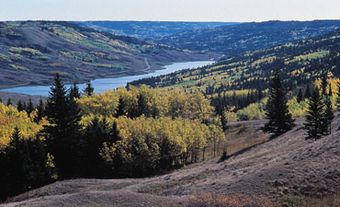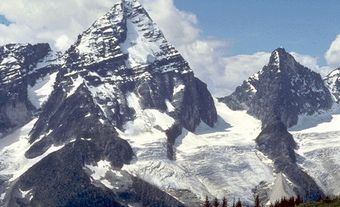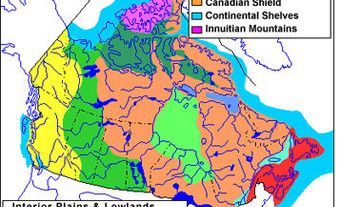Sonar
Sonar (sound navigation and ranging), method for locating objects by the reflection of sound waves. It is used naturally by such animals as BATS and DOLPHINS to locate food and obstacles. Sonar was first developed - as a practical method of detecting underwater hazards (eg, submarines, icebergs) and for measuring water depths - by Constantin Chilowsky and Paul Langevin in France during WWI, with the collaboration of the Canadian R.W. BOYLE. During WWII the Royal Canadian Navy, specializing in convoy escort and in antisubmarine activities, called on Canadian oceanographers to assess water-stratification conditions and to study the behaviour of sound under water. J.P. TULLY and W.M. CAMERON worked with G.S. Field of the NATIONAL RESEARCH COUNCIL on ways of improving sonar detection of submarines. Sonar has since been further developed for civilian, scientific and military uses. Because sonar techniques can be used to locate and map changes in the medium through which sound waves travel, they can be used to determine variations in the sedimentary structure of the Earth beneath the sea, through a method known as seismic reflection, and to map the seafloor surface. Seafloor sediments absorb normal high-sonar frequencies very rapidly, so that early application of seismic-reflection techniques at sea used repeated detonation of explosives as a low-frequency sound source (see SURVEYING).
Seismic Deeptow In marine seismic exploration the acoustic sound source and receiver are normally towed behind the survey vessel at a shallow depth below the sea surface.
In Canada, 2 deep-towed seismic systems have been developed to provide the high resolution required for mapping unconsolidated seabed sediments. In both systems the sound source and receiving hydrophones are on or are towed from a hydrodynamically designed "fish," itself towed at depths of 200-600 m and at speeds up to 6-8 knots by a survey vessel. The Nova Scotia Research Foundation (NSRF) system uses a 1.2 m V-fin underwater vehicle as the deep-towed stable platform to house the source and receiver. The Deep Tow Seismic System was developed by Huntec '70 Ltd in Toronto as part of the joint Government/Industry Seabed Project (1975-80) and it uses a specially designed hydrodynamic tow body to house power supplies and transducers. The Seabed Project brought together the scientists and engineers required to develop the technology to quantify the acoustic response of marine sediments and to apply seismic deep-tow techniques to the mapping of the surficial sediments over the Canadian Continental Shelf.
Recent Canadian developments in sonar have attempted to improve the image quality or information content in the reflected signal through the use of pattern-recognition techniques, initially developed for processing satellite and space vehicle photographic images; multi-frequency source/receiver systems for improved signal redundancy and target identification; broad-band swept or parametric sources for improved beam geometry and resolution; and high-speed digital processors for real-time beam forming and image processing. These techniques have led to several new developments with enhanced capability for fish finding, mine and submarine detection, as well as sea floor mapping and sediment property delineation.

 Share on Facebook
Share on Facebook Share on X
Share on X Share by Email
Share by Email Share on Google Classroom
Share on Google Classroom


